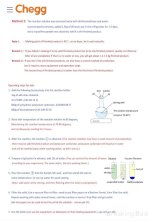- Joined
- Jan 12, 2024
- Messages
- 5
- Reaction score
- 15
- Points
- 3
Hi all u beautiful souls of bbgate 
I have some information along with questions pertaining to the synthesis of MDMB-4en-PINACA // Methyl 3,3-dimethyl-2-(1-(pent-4-en-1-yl)-1H-indazole-3-carboxamido)butanoate // C20H27N3O3 // Cas no. 2504100-70-1 (also colloquially & incorrectly known as 5cl-adb-a or simply “5CL”).

I will leave the write-up for the synthesis I’m following at the end of this post. I also have adjusted scales for 50g, 100g, and 500g you can PM me if interested.
As an aside: we have successfully synthesized ADB-BUTINACA a large number of times following an almost identical procedure, just replacing the 5-bromo-1-pentene with 1-bromobutane and a different main ingredient I’m not quite sure the identity of.
There were absolutely no issues with crystallization of the ADBB just dumping the reaction contents into ice water. We are concerned from talk we hear of others difficulties that this may be more of an issue with the synthesis of MDMB-4en-PINACA.
General info may or may not be correct about:
Mechanism info:
My questions:
Before my questions about varying reaction conditions and reagent amounts, I would much appreciate any corrections or pointers regarding my understanding above ^ from anyone who has any clue what they are talking about (unlike me, lol).
Ingredients:
Main ingredient is most likely MDMB-INACA or N-methyl-1H-indazole-3-carboxamide
Cautionary note: both DMF & 5-bromo-1-pentene will dissolve a lot of plastics - so stay away from plastic
①. Main ingredient, 1kg (3.456mol)
②. DMF, 2.5 liters
③. Potassium carbonate, 720g (5.2mol)
④. 5-Bromo-1-pentene, 515g or 410ml (3.455mol)
Steps:
Add ①②③ into the reaction flask, turn on stirring, and bring heat to 60-70°C
Slowly add ④ over the course of 1 hour, react for 2-3 more hours, then turn off stirring and cool to room temperature
How to get the finished product:
If you end up with an oily final product, we can assist you with making it crystals if needed, but the oil will work just as well for c-liquids / making sprays or dipping solution for paper. The second extraction method below is more advanced, but will leave you with the highest purity spice crystals.
Second Extraction Method (solvent-solvent extraction, vacuum distillation, re-crystallization):
Using this second method you will obtain product free from most impurities. The impurities left in the first extraction method are mostly just a small amount of 2-substituted impurities, and these will not affect the overall quality or toxicity of the product.
The only literature I was able to find anything substantial about synthesis information of this compound was the following paper: https://sci-hub.ru/https://doi.org/10.1002/dta.3037 ||
"Subjecting 1-(pent-4-en-1-yl)-1H-indazole-3-carboxylic acid (43, 230 mg,1.00 mmol, 1.00 equiv.) and methyl (S)-2-amino-3,3-dimethylbutanoate hydrochloride (200 mg, 1.10 mmol, 1.10 equiv.) to general procedure A gave, following purification by flash chromatography (hexane:EtOAc 95:5 to 85:15), 12 as a colorless low melting solid (246 mg, 57%). Rf 0.49 (hexane:EtOAc 80:20);
Where general procedure A is as follows: To a solution of the appropriate carboxylic acid (0.50 mmol, 1.00 equiv.) in DMF (2 ml) was added the appropriate amine or corresponding hydrochloride salt (0.55 mmol, 1.10 equiv.), HOBtH2O
(84.2 mg, 0.55 mmol, 1.10 equiv.), EDCHCl (144 mg, 0.75 mmol, 1.50 equiv.), and triethylamine (0.28 ml, 2.00 mmol, 4.00 equiv.). The
resulting suspension was stirred at ambient temperature for 24 h before H2O (18 ml) and EtOAc (20 ml) were added and the layers separated. The aqueous phase was extracted with EtOAc (3 × 30 ml), and the combined organics were washed with H2O (3 × 30 ml) and brine (30 ml), dried (MgSO4), filtered, and the solvent evaporated under reduced pressure. The crude products were purified by flash chromatography."
Sorry for such a lengthy post, I wanted to be comprehensive with any information I provided and with the questions I have. I hope anyone interested had no issues skimming through this! If you did, let me know and I will make some edits
I will make some later posts on how to make c-liquids, sprays, dipping solutions, and how to make strong, clean papers that will get into facilities. I have comprehensive info on how you can ship books from amazon, barnes & noble, local bookstores etc. If you want this info now hit me up on session messenger - ID: 057752929f128c5fc14fc80a527f7696a9b2b6f53cdcc933fad65a1746bbb0186a
Remember y’all… HE WHO CONTROLS THE SPICE CONTROLS THE UNIVERSE!
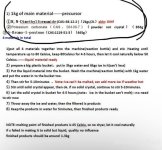
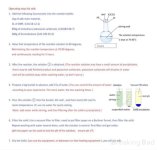
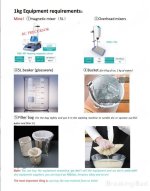
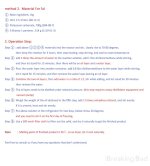

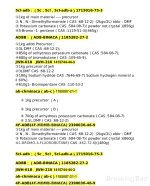
I have some information along with questions pertaining to the synthesis of MDMB-4en-PINACA // Methyl 3,3-dimethyl-2-(1-(pent-4-en-1-yl)-1H-indazole-3-carboxamido)butanoate // C20H27N3O3 // Cas no. 2504100-70-1 (also colloquially & incorrectly known as 5cl-adb-a or simply “5CL”).
I will leave the write-up for the synthesis I’m following at the end of this post. I also have adjusted scales for 50g, 100g, and 500g you can PM me if interested.
As an aside: we have successfully synthesized ADB-BUTINACA a large number of times following an almost identical procedure, just replacing the 5-bromo-1-pentene with 1-bromobutane and a different main ingredient I’m not quite sure the identity of.
There were absolutely no issues with crystallization of the ADBB just dumping the reaction contents into ice water. We are concerned from talk we hear of others difficulties that this may be more of an issue with the synthesis of MDMB-4en-PINACA.
General info may or may not be correct about:
- The 1-alkyl chain is added to MDMB-INACA via nucleophilic substitution
- MDMB-INACA (acts as the substrate, the nucleophile that will replace the bromine atom) reacts with 5-bromo-1-pentene (acts as the electrophile) in the presence of potassium carbonate (acts as the base in this reaction, providing hydroxide ions (OH⁻) necessary for the substitution)
- This reaction is carried out in the polar aprotic solvent, N,N-Dimethylformamide (DMF)
- 5-bromo-1-pentene: this compound serves as the electrophile — the carbon atom bonded to the bromine is electron-deficient and seeks electron-rich reagents to react with
- Nucleophilic attack by OH⁻ on the carbocation intermediate leads to the substitution of the bromine in MDMB-INACA
- The final product is formed by replacing the bromine with the pent-4-en-1-yl group from 5-bromo-1-pentene
Mechanism info:
- the overall mechanism is a nucleophilic substitution process (SN1), I have outlined the steps I think it would follow below:
- Formation of the carbocation: 5-bromo-1-pentene undergoes heterolytic cleavage of the C-Br bonding, forming the carbocation intermediate
- Nucleophilic attack: MDMB-INACA (the nucleophile) attacks the electrophilic carbon of the carbocation — the bromine is replaced by the pent-4-en-1-yl group from 5-bromo-1-pentene
My questions:
Before my questions about varying reaction conditions and reagent amounts, I would much appreciate any corrections or pointers regarding my understanding above ^ from anyone who has any clue what they are talking about (unlike me, lol).
- I see varying reaction temperatures, ranging from 60-80°C, along with varying reaction times, ranging from 2-5 hours total stirring at these heats.
- Does anybody know what the ideal conditions are for this reaction?
- Potassium carbonate is highly insoluble in DMF, at least at room temperature (lit says solubility is 7.5g of K2CO3 per 1000ml of DMF at 25c), but I’ve also noticed from performing many ADB-BUTINACA syntheses, that much of the k2co3 remains undissolved throughout the reaction even at 80-90°C
- The adbb syntheses seem to work just fine without K2CO3 being completely dissolved.
- I just thought yield could be improved if K2CO3 was fully dissolved in the solution but perhaps it's not necessary
- Wouldn’t the dissolution of k2co3 only not matter if it was simply acting as a scavenger, which if I’m not mistaken is not the primary function of k2co3 in this reaction?
- I see varying ranges for the amounts of solvent (2-3L DMF), amounts of 5-bromo (465g-515g), and amounts of k2co3 (700g-856g)
- using equimolar amounts of MDMB-INACA and 5-bromo-1-pentene should indicate the use of about 515g 5-bromo per kg MDMB-INACA (apprx. 3.5mol) — should I be using a molar excess of 5-bromo, an excess of MDMB-INACA, or is equimolar fine?
- should I be leaning more towards 2 or 3 liters of DMF?
- will a heavy excess of k2co3 affect the reaction? 700g is already a significant molar excess (apprx. 5.2mol), I know excess will enhance the reaction rate by providing more hydroxide ions, but what about the possibility of competing elimination reactions or altering the regioselectivity of the reaction?
- Will water mess up the reaction? Is using anhydrous k2co3 / DMF very important?
- I’ve seen some have issues with crystallization of the final product, only being able to obtain oily residues when using ice water for the final crystallization step straight from the reaction mixture (method 1, seen in my write-up below), as opposed to extracting twice with DCM, concentrating to dryness under vacuum, & recrystallizing from anhydrous ethanol (method 2) — has anyone here been able to obtain solid product from the first method? (procedures described in my write-up below)
- I’m aware that many Chinese labs have stopped producing the main ingredient MDMB-INACA, though the vendor I’m working with seems to offer it although they won’t give any IUPAC name or Cas no. for it. Is it likely that they are actually selling me a completely different precursor than MDMB-INACA that still works to produce a noid with this procedure?
- Finally, my last question pertains to a comment in the following thread: https://bbgate.com/threads/5cl-synthesis-kits-china.1247/
- user /u/BackstagePanther says the following: "You are right that reacting it with 5-bromo-1-pentene yields 5cl, impossible to crystallize, and I have reported having reacted the same precursor with 1-bromo-5-fluoropentane and obtaining a stronger product, and I presume it is 1971007-89-2, the S- isomer (or possibly racemic mixture)”
- my question is, would replacement of 5-bromo-1-pentene with 1-bromo-5-fluoropentane not yield 5F-MDMB-PICA? (this is what a Chinese vendor told me)
Synthesis Procedure Write-up
Ingredients:
Main ingredient is most likely MDMB-INACA or N-methyl-1H-indazole-3-carboxamide
Cautionary note: both DMF & 5-bromo-1-pentene will dissolve a lot of plastics - so stay away from plastic
①. Main ingredient, 1kg (3.456mol)
②. DMF, 2.5 liters
③. Potassium carbonate, 720g (5.2mol)
④. 5-Bromo-1-pentene, 515g or 410ml (3.455mol)
Steps:
Add ①②③ into the reaction flask, turn on stirring, and bring heat to 60-70°C
Slowly add ④ over the course of 1 hour, react for 2-3 more hours, then turn off stirring and cool to room temperature
How to get the finished product:
- Pour the entire reaction mixture into ice water while stirring, and add it slowly (at least double the amount of ice as water, ex. for 8kg ice : 2kg water). The obtained powder is the finished product.
- Fish out the large chunks of crystallized finished product and set aside, then pour the entire ice-water reaction mixture into filter bag (300 mesh works) to collect the rest of the product.
- Place the product you set aside into the mesh bag along with the product already in the bag from the filtration you just did, then pour more ice cold water over all the finished product to wash away any excess contaminants.
- You can place the ice-water reaction mixture into the fridge for a few hours or overnight, more product may crystallize out.
- Some people tie the mesh bag tightly and run through a washer/dryer with NO HEAT to tumble dry, others place product in a vacuum desiccator to dry under vacuum, and most just crush up the product into fine pieces and leave to air dry.
If you end up with an oily final product, we can assist you with making it crystals if needed, but the oil will work just as well for c-liquids / making sprays or dipping solution for paper. The second extraction method below is more advanced, but will leave you with the highest purity spice crystals.
Second Extraction Method (solvent-solvent extraction, vacuum distillation, re-crystallization):
- Once the reaction mixture is cooled to room temperature, add 2x the amount of water to the solution, and add 1L dichloromethane (DCM) while stirring for 10-20 minutes
- Turn off stirring, and let the mixture stand for 15 minutes, there will be an oil layer and a water layer. The next step is easiest using a large separatory funnel.
- Pour the water layer into another container, add 800mL DCM to this, and stir for 10-20 minutes (or shake the separatory funnel with frequent venting if using a sep funnel), then turn off stirring or stop shaking and let stand for 15 minutes, then remove the water layer leaving you with another organic oil layer
- Combine the 2 oil layers, add half the amount of water (1:2 - water : oil) and stir for 10 minutes, then turn off stirring and let stand for 30 minutes. Finally remove the water layer.
- Take the oil layer (contains product) and distill it under vacuum (reduced pressure so you do not overheat). By doing this you will concentrate the oil (product) in the boiling flask, and you will collect/recover the DCM from this oil as the first boiling fraction.
- Weigh the weight of the oil obtained in the distillation, then add 1.5x that weight of anhydrous ethanol while stirring (should be close to 1.5kg ethanol). If stirring is difficult, heat the mixture slightly.
- Put the above solution into the freezer for 2 days — stir this solution on the first day of freezing. The ethanol will not freeze as its freezing temperature is under -100°C, far below that of a conventional freezer.
- Take your solution out of the freezer, there will be a bunch of crystallized final product. Use a 300 mesh filter cloth to filter out the solid, and dry it naturally or under vacuum to get the finished crystal spice

Using this second method you will obtain product free from most impurities. The impurities left in the first extraction method are mostly just a small amount of 2-substituted impurities, and these will not affect the overall quality or toxicity of the product.
The only literature I was able to find anything substantial about synthesis information of this compound was the following paper: https://sci-hub.ru/https://doi.org/10.1002/dta.3037 ||
"Subjecting 1-(pent-4-en-1-yl)-1H-indazole-3-carboxylic acid (43, 230 mg,1.00 mmol, 1.00 equiv.) and methyl (S)-2-amino-3,3-dimethylbutanoate hydrochloride (200 mg, 1.10 mmol, 1.10 equiv.) to general procedure A gave, following purification by flash chromatography (hexane:EtOAc 95:5 to 85:15), 12 as a colorless low melting solid (246 mg, 57%). Rf 0.49 (hexane:EtOAc 80:20);
Where general procedure A is as follows: To a solution of the appropriate carboxylic acid (0.50 mmol, 1.00 equiv.) in DMF (2 ml) was added the appropriate amine or corresponding hydrochloride salt (0.55 mmol, 1.10 equiv.), HOBtH2O
(84.2 mg, 0.55 mmol, 1.10 equiv.), EDCHCl (144 mg, 0.75 mmol, 1.50 equiv.), and triethylamine (0.28 ml, 2.00 mmol, 4.00 equiv.). The
resulting suspension was stirred at ambient temperature for 24 h before H2O (18 ml) and EtOAc (20 ml) were added and the layers separated. The aqueous phase was extracted with EtOAc (3 × 30 ml), and the combined organics were washed with H2O (3 × 30 ml) and brine (30 ml), dried (MgSO4), filtered, and the solvent evaporated under reduced pressure. The crude products were purified by flash chromatography."
Sorry for such a lengthy post, I wanted to be comprehensive with any information I provided and with the questions I have. I hope anyone interested had no issues skimming through this! If you did, let me know and I will make some edits
I will make some later posts on how to make c-liquids, sprays, dipping solutions, and how to make strong, clean papers that will get into facilities. I have comprehensive info on how you can ship books from amazon, barnes & noble, local bookstores etc. If you want this info now hit me up on session messenger - ID: 057752929f128c5fc14fc80a527f7696a9b2b6f53cdcc933fad65a1746bbb0186a
Remember y’all… HE WHO CONTROLS THE SPICE CONTROLS THE UNIVERSE!







